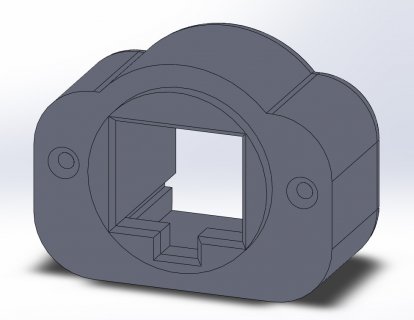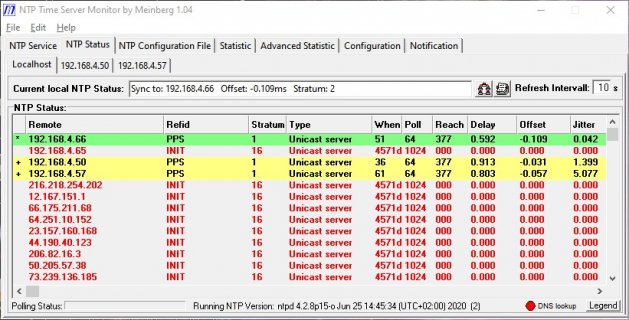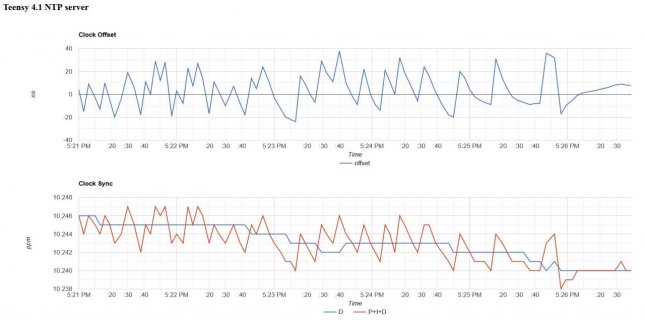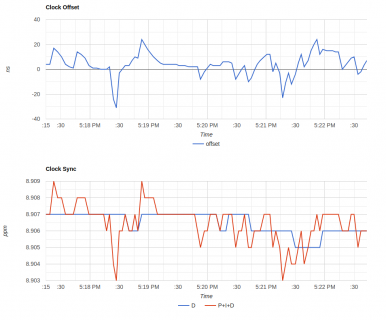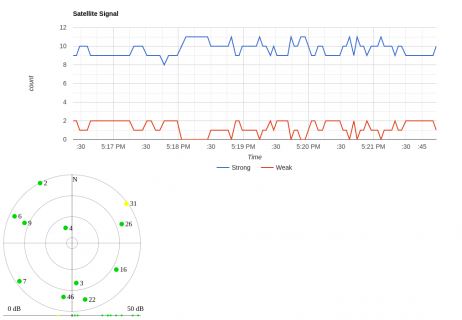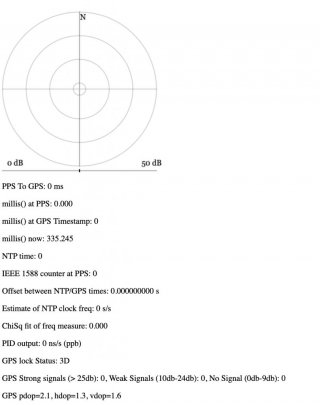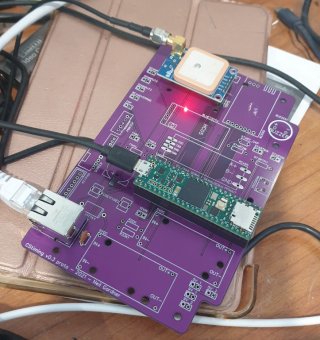Some initial results
Good afternoon all,
Some early results:

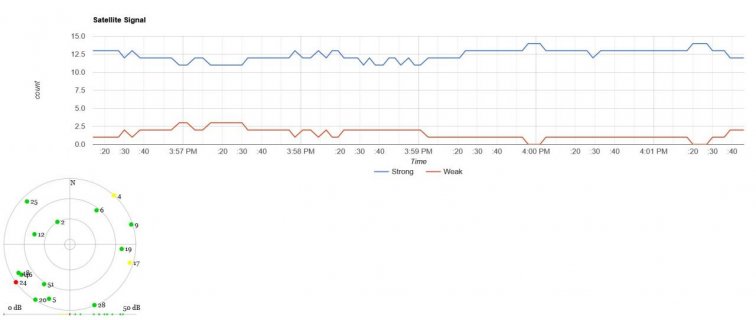
And the stats from the bottom:
And Meinberg shows it as a valid peer available for synchronization.
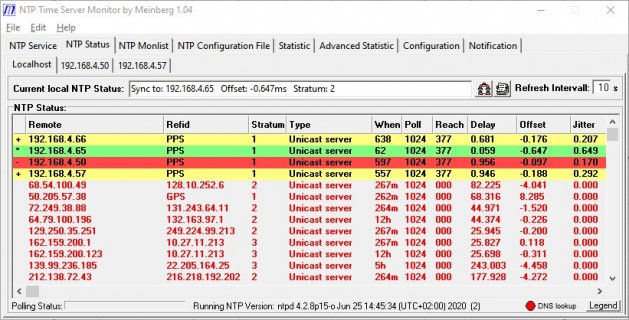
I should note that:
192.168.4.66 is the Teensy.
192.168.4.65 is a Chinese NTP server from the ePlace.
192.168.4.50 is an RPi NTP server.
192.168.4.57 is an RPi NTPSec server.
Why do I have four GPS NTP servers on my local network? Why not? hahaha
Thanks much,
Ben
Good afternoon all,
Some early results:


And the stats from the bottom:
Code:
PPS To GPS: 107 ms
millis() at PPS: 9376.972
millis() at GPS Timestamp: 9377079
millis() now: 9377.766
NTP time: 3830619824
IEEE 1588 counter at PPS: 2463559265
Offset between NTP/GPS times: 0.000000029 s
Estimate of NTP clock freq: 0.000009757 s/s
ChiSq fit of freq measure: 1.678
PID output: 9760 ns/s (ppb)
GPS lock Status: 3D
GPS Strong signals (> 25db): 14, Weak Signals (10db-24db): 0, No Signal (0db-9db): 1
GPS pdop=1.6, hdop=0.8, vdop=1.4And Meinberg shows it as a valid peer available for synchronization.

I should note that:
192.168.4.66 is the Teensy.
192.168.4.65 is a Chinese NTP server from the ePlace.
192.168.4.50 is an RPi NTP server.
192.168.4.57 is an RPi NTPSec server.
Why do I have four GPS NTP servers on my local network? Why not? hahaha
Thanks much,
Ben


